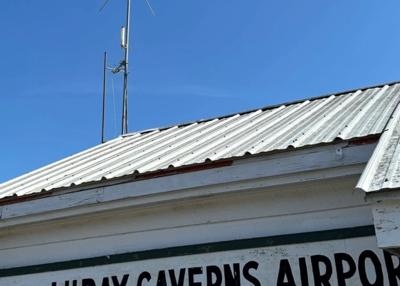Sun, Sep 03, 2023
Receiver Network Enables Higher Resolution for ADS-B Tracking
The Civil Air Patrol’s Virginia Wing has helped uAvionix test out a DO-260B compliant dual band ADS-B receiver network to supplement FAA sensor data, bearing out the new systems’ benefits under the National Radar Analysis Team mission to shorten rescue times.

Volunteers all over Virginia state have helped to find and assess receiver sites to install small, lightweight “Flightstation” ADS-B receivers designed to pick up and relay transponder data from nearby aircraft. The network helps increase resolution at lower altitudes, greatly enhancing the quality of positional data for low-flying general aviation aircraft. Should the worst come to pass, that data becomes vital as the last known position for an aircraft - the more accurate the information, the smaller the search area, therefore the better the health outcomes for those injured in an off-airport landing.
The system, apparently operating as “FlightLine”, consists of “several ATC grade ADS-B receivers with overlapping coverage, allowing for validation of transmitted ADS-B data and pinpoint multilaterated positions.” That helps cover the gaps in traditional ADS-B and radar coverage, partly caused by the dearth of the 978 Mhz monitoring throughout the USA. The newly deployed network means that Virginia is the “first State in the US to have 100% coverage down to 500 ft of altitude”, with more to come.
“NRAT has been working several years to test small ADSB receivers to place at locations with limited FAA coverage”, said Lt Col Mark Young, Commander of NRAT. “The availability of these new receivers, built to RTCA aviation certification standards, and it’s subsequent real time data from FlightLine data available to CAP is a significant advancement for NRAT. Real time data at lower altitudes significantly improves NRAT’s ability to provide a fast and accurate location of missing aircraft that can be used to support the Emergency Services Search & Rescue mission and will result in lives saved.”
“uAvionix is proud to work together with CAP to improve low altitude data availability for this important public service”, said Christian Ramsey, Managing Director of uAvionix. “The introduction of ADS-B has resulted in a significant improvement of General Aviation safety, expanding on the FAA coverage at lower altitude and for UAT transponders typically carried by General Aviation will further enhance the tools used in safety of life activities such as CAP‘s Emergency Services mission.”
More News
Improvements Stack as Brand Readies for Mass Production Samson Sky updated followers on its flying car progress, describing some of the travails of the wind tunnel as they get clos>[...]
LAHSO An acronym for “Land and Hold Short Operation.” These operations include landing and holding short of an intersecting runway, a taxiway, a predetermined point, or>[...]
Dave Juwel's Aviation Marketing Stories ITBOA BNITBOB ... what does that mean? It's not gibberish, it's a lengthy acronym for "In The Business Of Aviation ... But Not In The Busine>[...]
Aero Linx: Space Medicine Association (SMA) The Space Medicine Branch was founded in 1951 as the first constituent organization of the Aerospace Medical Association (AsMA). In 2006>[...]
Back-Taxi A term used by air traffic controllers to taxi an aircraft on the runway opposite to the traffic flow. The aircraft may be instructed to back-taxi to the beginning of the>[...]
 Samson Sky Hits the Wind Tunnel
Samson Sky Hits the Wind Tunnel ANN's Daily Aero-Term (05.22.24): LAHSO
ANN's Daily Aero-Term (05.22.24): LAHSO Aero-FAQ: Dave Juwel's Aviation Marketing Stories -- ITBOA BNITBOB
Aero-FAQ: Dave Juwel's Aviation Marketing Stories -- ITBOA BNITBOB ANN's Daily Aero-Linx (05.19.24)
ANN's Daily Aero-Linx (05.19.24) ANN's Daily Aero-Term (05.19.24): Back-Taxi
ANN's Daily Aero-Term (05.19.24): Back-Taxi



